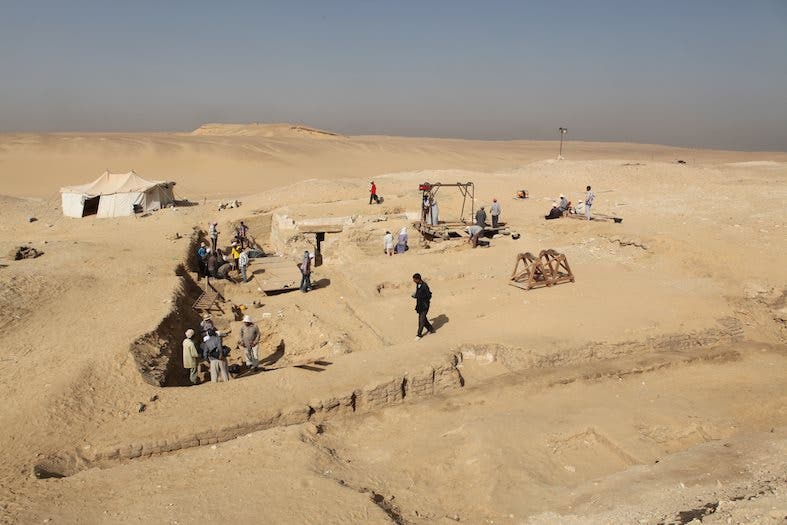Archaeologists from the Charles University in Prague have made a stunning discovery in Egypt: they found a stunningly well preserved long boat, buried for four and a half millennia.

The discovery was made at Abusir, “the House or Temple of Osiris” and an extensive necropolis with many well documented findings. But Egypt still has a story to tell. In 2009, Czech archaeologists started to dig and work around a local mastaba, a type of rectangular stepped tomb made of mud bricks. The imposing size of the mastaba, as well as the architectural details and the name of king Huni (Third Dynasty) discovered on one of the bowls made them think there’s more to find – and they were right.
After digging for over 5 years, they uncovered an 18 m-long wooden boat covered by wind-blown sand. Located some 12 meters away from the mastaba, it is still clearly part of the burial site. The boat’s condition is simply stunning; not only are the wooden planks and joinery intact after 4500 years, but even the original rigging is still in place, probably aided by the dry sand. Researchers believe studying these elements will shed a new light on Egyptian boat building.

But equally interesting is the burial site itself – the practice of burying someone alongside a boat. We don’t know who this person was because all revealing writings have faded away. He wasn’t a royal member because he wasn’t buried in or around a pyramid, but he was still important enough to be buried in a mastaba – so we’re clearly talking about a member of the elite society. The practice is also not new, but this is the biggest boat ever found in a burial site by a wide margin.
“It is by all means a remarkable discovery. The careful excavation and recording of the Abusir boat will make a considerable contribution to our understanding of ancient Egyptian watercraft and their place in funerary cult. And where there is one boat, there very well may be more.” adds director of the excavations, Miroslav Bárta.
Abusir is one relatively small segment of the extensive “pyramid field” that extends from north of Giza to below Saqqara. It is currently one of the most significant active sites in Egypt being, among other things, the origin of the largest find of Old Kingdom papyri to date.



